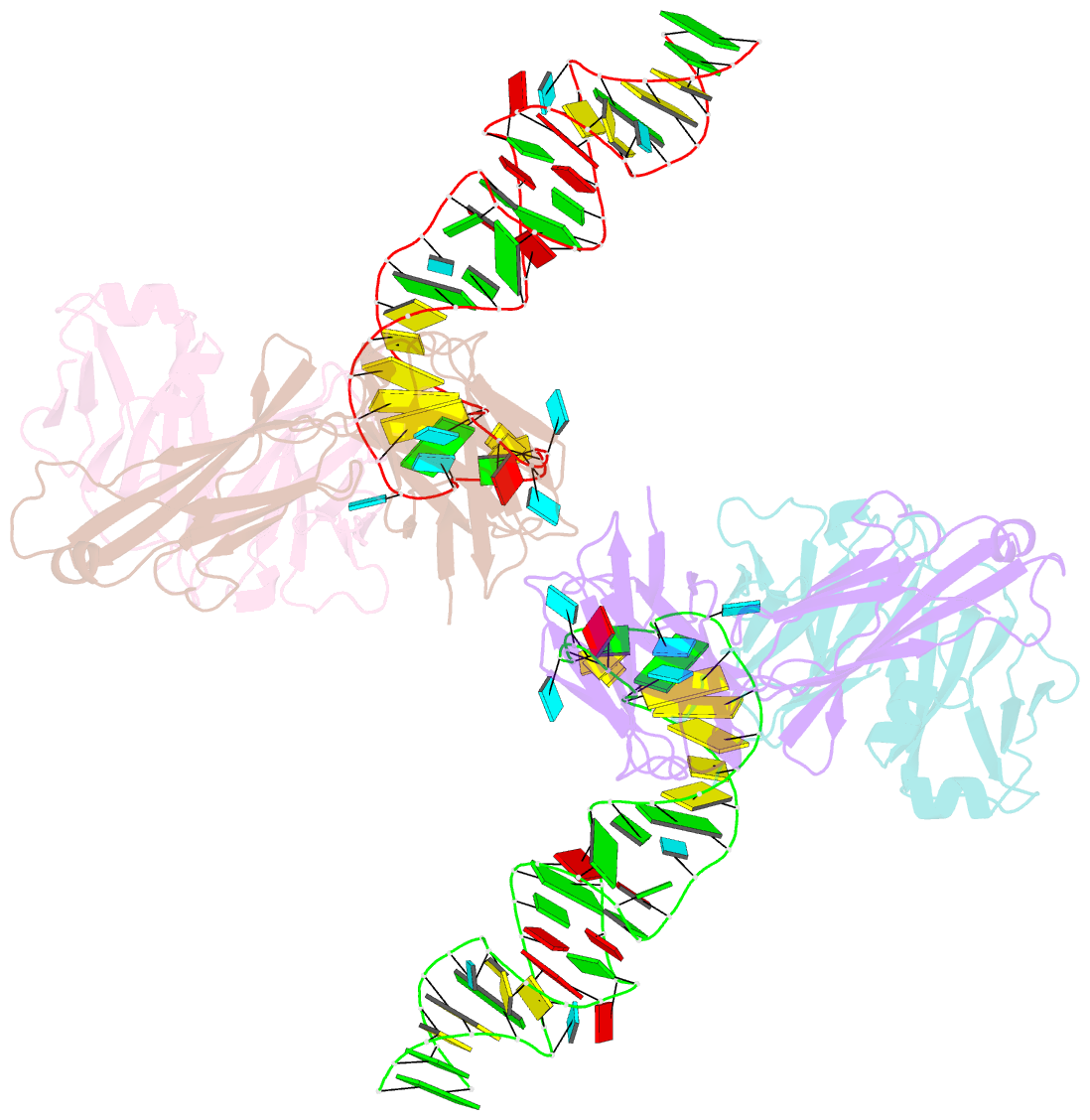Summary information and primary citation
- PDB-id
- 6xjz; SNAP-derived features in text and JSON formats;
DNAproDB
- Class
- RNA-immune system
- Method
- X-ray (2.488 Å)
- Summary
- Crystal structure of a self-alkylating ribozyme - apo form
- Reference
- Krochmal D, Shao Y, Li NS, DasGupta S, Shelke SA, Koirala D, Piccirilli JA (2022): "Structural basis for substrate binding and catalysis by a self-alkylating ribozyme." Nat.Chem.Biol., 18, 376-384. doi: 10.1038/s41589-021-00950-z.
- Abstract
- Ribozymes that react with small-molecule probes have important applications in transcriptomics and chemical biology, such as RNA labeling and imaging. Understanding the structural basis for these RNA-modifying reactions will enable the development of better tools for studying RNA. Nevertheless, high-resolution structures and underlying catalytic mechanisms for members of this ribozyme class remain elusive. Here, we focus on a self-alkylating ribozyme that catalyzes nitrogen-carbon bond formation between a specific guanine and a 2,3-disubstituted epoxide substrate and report the crystal structures of a self-alkylating ribozyme, including both alkylated and apo forms, at 1.71-Å and 2.49-Å resolution, respectively. The ribozyme assumes an elongated hairpin-like architecture preorganized to accommodate the epoxide substrate in a hook-shaped conformation. Observed reactivity of substrate analogs together with an inverse, log-linear pH dependence of the reaction rate suggests a requirement for epoxide protonation, possibly assisted by the ether oxygens within the substrate.





